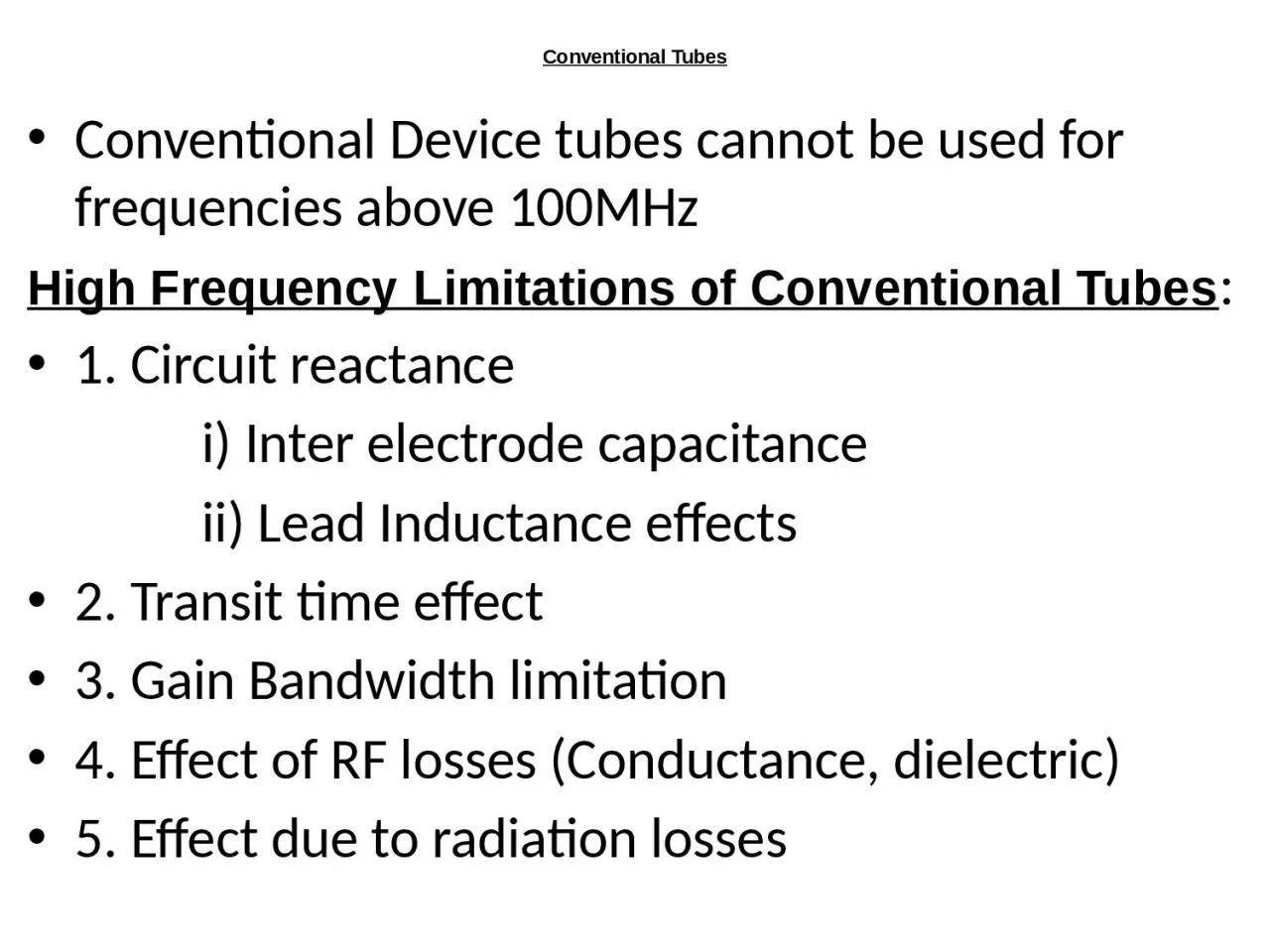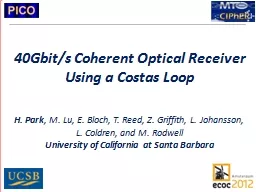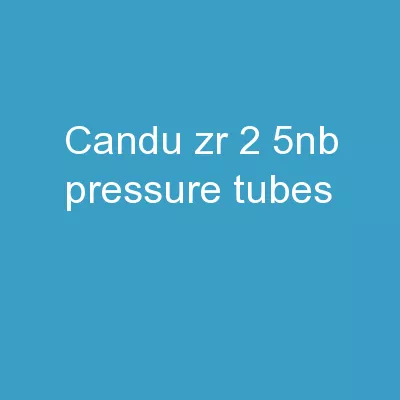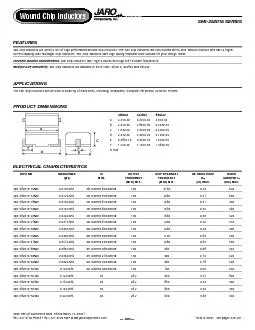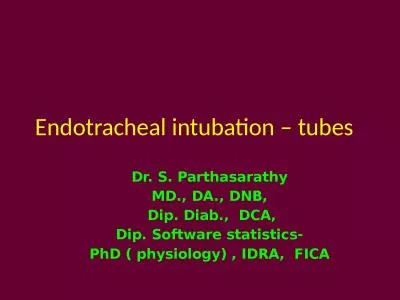PPT-Conventional Tubes Conventional Device tubes cannot be used for frequencies above 100MHz
Author : ava | Published Date : 2023-10-26
High Frequency Limitations of Conventional Tubes 1 Circuit reactance i Inter electrode capacitance ii Lead Inductance effects 2 Transit time effect 3 Gain Bandwidth
Presentation Embed Code
Download Presentation
Download Presentation The PPT/PDF document "Conventional Tubes Conventional Device t..." is the property of its rightful owner. Permission is granted to download and print the materials on this website for personal, non-commercial use only, and to display it on your personal computer provided you do not modify the materials and that you retain all copyright notices contained in the materials. By downloading content from our website, you accept the terms of this agreement.
Conventional Tubes Conventional Device tubes cannot be used for frequencies above 100MHz: Transcript
Download Rules Of Document
"Conventional Tubes Conventional Device tubes cannot be used for frequencies above 100MHz"The content belongs to its owner. You may download and print it for personal use, without modification, and keep all copyright notices. By downloading, you agree to these terms.
Related Documents

